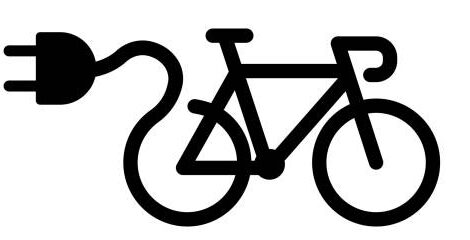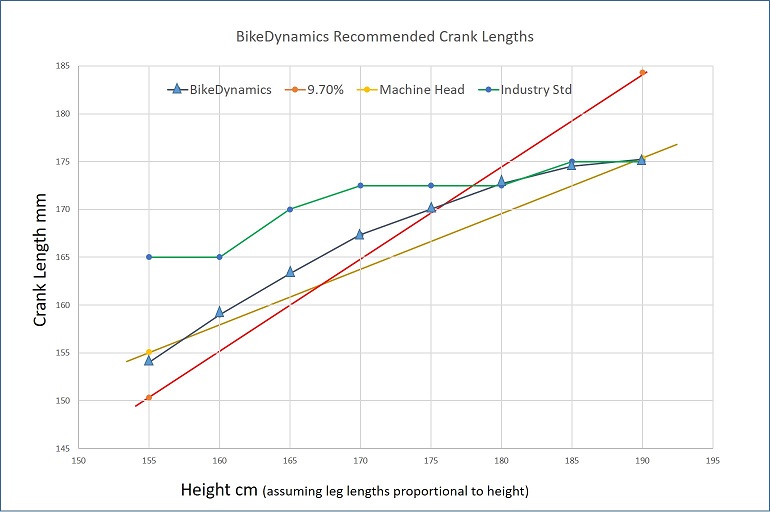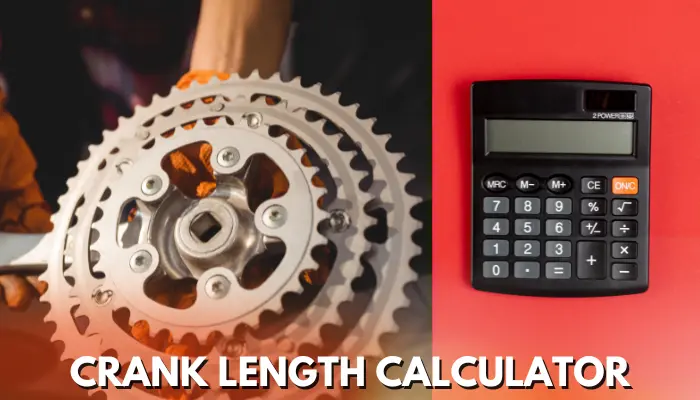Why Does Crank Arm Length Matter for Cycling Performance?
The bike crank length significantly influences cycling performance. It affects leverage, cadence, and overall efficiency. Selecting the appropriate crank length is crucial for optimizing power output and minimizing the risk of injury. Different bike crank length calculators can assist in estimating the right size, but understanding the underlying principles is essential. Leverage is directly impacted by crank arm length; longer cranks offer greater leverage, potentially aiding in climbing or accelerating. However, excessively long cranks can hinder cadence and lead to discomfort. Conversely, shorter cranks facilitate higher cadences and may be beneficial for riders with limited flexibility or those prone to knee pain. The goal is to find a balance that maximizes power while maintaining a comfortable and sustainable pedaling rhythm. Efficiency is also tied to crank length; an ill-fitting crank can lead to wasted energy and decreased performance. A properly sized crank allows for a more natural and fluid pedaling motion, reducing fatigue and improving overall efficiency. Therefore, considering the interplay between leverage, cadence, and efficiency is crucial when determining the optimal bike crank length. Remember, there is no one-size-fits-all solution. The ideal crank length is highly individual and depends on several factors, including rider anatomy, riding style, and discipline.
While various bike crank length calculators exist, they should be used as a starting point rather than a definitive answer. These tools typically rely on simple measurements, such as inseam length, to provide a suggested crank length. However, these static measurements fail to account for individual biomechanics and riding preferences. A rider with long legs might not necessarily benefit from the longest possible cranks, and a shorter rider might find that slightly longer cranks provide more power. It’s important to consider how the body moves and interacts with the bike during pedaling. Factors like hip angle, knee extension, and ankle mobility all play a role in determining the most efficient crank length. For example, a rider with limited hip flexibility may find that shorter cranks are more comfortable and allow for a smoother pedal stroke. Similarly, a rider who prefers a high cadence might benefit from shorter cranks that reduce stress on the joints. Therefore, it is necessary to look beyond simple calculations and consider the unique characteristics of each cyclist.
Ultimately, the best way to determine the ideal bike crank length is through experimentation and professional guidance. Trying different crank lengths and observing their effect on comfort, power, and efficiency is essential. This process can be facilitated by working with a qualified bike fitter who can analyze your biomechanics, observe your riding style, and provide personalized recommendations. A bike fitter can also help you fine-tune your bike setup to optimize your position and maximize your performance. Relying solely on a bike crank length calculator can be misleading, as it doesn’t account for the complex interplay of factors that influence optimal crank length. Instead, view these calculators as a tool to guide your exploration and use them in conjunction with expert advice and personal experimentation. The right bike crank length is the one that allows you to ride comfortably, efficiently, and powerfully, ultimately enhancing your cycling experience. Remember to consult with a bike fit professional before making any drastic changes to your bike setup.
How to Determine the Right Crank Length for Your Bike
Determining the appropriate bike crank length involves several methods, each with its strengths and limitations. No single method is foolproof, and individual experimentation often plays a crucial role. Static fit methods offer a starting point, while dynamic methods refine the choice based on actual riding observation. Finding the right bike crank length calculator may help you find your bike fit.
Static fit methods typically rely on measuring inseam length and correlating it to a suggested crank length range. These methods often use charts or formulas to provide a recommendation. For example, a longer inseam might suggest a longer crank arm, while a shorter inseam might indicate a shorter crank arm. While these methods are easy to implement, they don’t account for individual biomechanics or riding style. Another example would be using a bike crank length calculator to easily input your height and inseam to give you a fit. Consider these methods as a starting point for your bike crank length calculator journey.
Dynamic fit methods involve observing a cyclist’s pedaling technique and overall riding posture. A qualified bike fitter can assess factors like knee angle, hip movement, and ankle flexibility to determine if the current crank length is optimal. They might look for signs of overextension or excessive strain on the joints, which could indicate an incorrect crank length. Furthermore, dynamic methods may involve using a bike crank length calculator that takes into account your individual riding style and output. This approach offers a more personalized assessment but requires the expertise of a skilled fitter. Keep in mind that even the most sophisticated bike crank length calculator cannot replace the human eye and experience. Ultimately, the best approach often involves a combination of static and dynamic methods, coupled with trial and error, to find the bike crank length that maximizes comfort, efficiency, and performance.
Common Cycling Crank Length Options and Their Uses
Bike crank length calculator considerations often involve understanding the range of available sizes. Typically, bike crank lengths span from 165mm to 175mm, with some variations outside this range. Each length subtly influences cycling dynamics, catering to diverse rider needs and preferences. The selection isn’t arbitrary; it’s a nuanced decision impacting leverage, cadence, and comfort.
Shorter bike crank length calculator results sometimes indicate suitability for specific scenarios. For instance, shorter cranks, such as 165mm or 170mm, are occasionally favored in time trials. Riders with knee sensitivities might also find relief with shorter cranks. This is because they reduce the range of motion at the knee joint. Conversely, longer cranks, like 172.5mm or 175mm, may appeal to cyclists tackling climbs or those with longer legs. The increased leverage can aid in powering up steep inclines. However, these are general observations, not definitive prescriptions.
The relationship between bike crank length calculator recommendations and performance is not always linear. While longer cranks might intuitively suggest more power, this isn’t universally true. Efficiency and comfort are equally crucial. A crank length that feels awkward or strains the joints will ultimately hinder performance, regardless of theoretical power gains. Similarly, while shorter cranks can facilitate higher cadences, they might compromise power output for some riders. The ideal bike crank length calculator outcome balances power, comfort, and efficiency, tailored to the individual cyclist and their riding style. Consulting a professional bike fitter is crucial to navigate these considerations effectively and find the optimal crank length for individual needs.
Considering Cycling Discipline When Choosing Crank Length
Different cycling disciplines often necessitate different approaches to bike crank length selection. Road cycling, with its varied terrain and focus on sustained power output, allows for a broader range of crank lengths based on rider preference and riding style. Riders might experiment to find what feels most efficient for climbing, sprinting, and maintaining a consistent cadence on flats. Factors such as leg length, flexibility, and personal biomechanics play a significant role in determining the ideal bike crank length calculator for road cyclists.
Mountain biking presents unique challenges due to technical terrain and the need for quick bursts of power. Many mountain bikers find that slightly shorter cranks (relative to their road bike setup) are beneficial for reducing pedal strikes on rocks and roots. The increased clearance can be crucial for maintaining momentum and navigating challenging trails. Furthermore, shorter cranks can sometimes facilitate faster spin rates, which can be advantageous in technical sections. Therefore, the bike crank length calculator for mountain biking should consider the specific demands of the sport and the type of trails typically ridden.
Triathlon and time trialing often involve highly specific bike setups aimed at maximizing aerodynamic efficiency and sustained power output. Some triathletes and time trialists experiment with shorter cranks to open up the hip angle and improve their aerodynamic position on the bike. A more open hip angle can potentially reduce hip flexor fatigue and allow for a more powerful pedal stroke in the aero position. However, this is highly individual, and a professional bike fit is essential to determine the optimal crank length for triathlon, considering factors like saddle position, handlebar setup, and individual biomechanics. Finding the appropriate bike crank length calculator and setup is crucial for maximizing performance in these disciplines, and the optimal choice can vary widely depending on individual needs and preferences.
Factors Beyond Leg Length: Exploring Individual Biomechanics
While leg length often serves as a starting point for determining the appropriate bike crank length calculator, it’s crucial to understand that individual biomechanics play a significant role. The “one-size-fits-all” approach rarely works in cycling, and relying solely on inseam measurements can lead to suboptimal performance and potential discomfort. A more comprehensive assessment considers how your body moves and interacts with the bike.
Hip flexibility is a key factor influencing optimal bike crank length calculator selection. Riders with limited hip mobility may find that shorter cranks allow for a smoother pedal stroke and reduced strain on the hip joint. Conversely, individuals with excellent hip flexibility might benefit from slightly longer cranks, potentially increasing leverage. Ankle mobility also plays a role; restricted ankle movement can affect how efficiently power is transferred throughout the pedal stroke, influencing the ideal crank length. Pedaling style, whether you tend to “mash” or spin, is another important consideration. Mashing, characterized by high force and low cadence, might be better suited to slightly longer cranks, while spinning, involving lower force and higher cadence, could be more efficient with shorter cranks. It’s important to note that finding the correct bike crank length calculator may require professional guidance to properly evaluate these different variables.
Ultimately, determining the optimal bike crank length calculator involves a holistic approach that goes beyond simple measurements. Considering your individual biomechanics, including hip and ankle mobility, pedaling style, and any pre-existing physical limitations, is essential for maximizing comfort, efficiency, and power output. Ignoring these factors and relying solely on leg length can lead to discomfort, injury, and a less enjoyable cycling experience. Seeking guidance from a qualified bike fitter who can assess your unique biomechanics and riding style is strongly recommended to find the perfect bike crank length calculator for your needs. This ensures that your bike is properly set up and contributes to improved performance and reduced risk of injury.
Addressing Common Concerns About Cycling Crank Arm Sizing
Many cyclists have questions about bike crank length and its effect on their performance. One common misconception is that a longer crank arm always results in increased power output. While a longer lever can generate more torque, it also requires a greater range of motion at the hip and knee. This can lead to decreased efficiency and potential discomfort if the crank arm is too long for the rider’s biomechanics. The optimal bike crank length calculator should consider individual flexibility and riding style.
Another frequent question involves cadence. Some believe that shorter crank arms are invariably superior for achieving higher cadences. While shorter cranks can facilitate quicker leg turnover, they might also reduce the amount of torque generated with each pedal stroke. High cadence is more related to training and neuromuscular adaptation than solely based on bike crank length. Finding the correct balance between crank length and cadence is crucial for sustained performance. Factors like terrain and riding intensity influence the ideal cadence and, consequently, the appropriateness of a particular crank length.
Furthermore, there’s the notion that a bike crank length calculator can provide a definitive, one-size-fits-all answer. The truth is that individual factors play a significant role. Considerations beyond leg length, such as hip angle, flexibility, and riding style, must be taken into account. Experimentation and professional guidance from a qualified bike fitter are invaluable in determining the optimal crank length for each cyclist. The best bike crank length calculator incorporates these individual needs for optimal results. It’s essential to dispel myths and promote a nuanced understanding of how crank arm length interacts with individual biomechanics and riding goals. Ultimately, the right crank length enhances comfort, efficiency, and power output, contributing to a more enjoyable and effective cycling experience. The impact of bike crank length on performance is multifaceted and warrants careful consideration.
Using a Bicycle Fitting Service for Optimal Crank Arm Selection
Consulting a qualified bike fitter offers significant advantages in determining the ideal bike crank length calculator for your specific needs. A professional fitting goes beyond simple measurements, providing a comprehensive assessment of your biomechanics and riding style. Reputable bike shops commonly offer these services, recognizing their value in optimizing rider performance and comfort. This personalized approach ensures a more accurate and effective crank length selection compared to relying solely on generic formulas or online bike crank length calculator tools.
A bike fitter will analyze your pedaling technique, hip angle, knee tracking, and ankle mobility. This dynamic evaluation helps identify any biomechanical limitations or imbalances that may influence the optimal bike crank length calculator for you. They can observe your riding posture and assess how different crank lengths affect your efficiency and power output. Furthermore, a professional fitting allows you to experiment with various crank arm lengths in a controlled environment, providing valuable feedback on how each length feels and performs. This hands-on experience is invaluable in making an informed decision.
Investing in a professional bike fit is an investment in your cycling performance and enjoyment. While online bike crank length calculator tools can provide a starting point, they cannot replicate the personalized insights and expertise of a qualified fitter. By considering your individual biomechanics and riding goals, a bike fitter can help you select the bike crank length calculator that maximizes your power, efficiency, and comfort on the bike. This leads to a more enjoyable and sustainable cycling experience, reducing the risk of injury and enhancing your overall performance.
Fine-Tuning Your Cycling Position After Changing Crank Arm Length
Altering your bike crank length necessitates a reassessment of your overall cycling position. This adjustment is crucial for maintaining comfort, optimizing power output, and preventing potential injuries. Failing to make necessary changes can negate the benefits of a different crank length and may even lead to discomfort or pain. A bike crank length calculator can assist in the initial selection process, but fine-tuning is essential afterward.
Saddle height is the most immediate adjustment to consider. If you’ve shortened your bike crank length, you will likely need to lower your saddle to maintain the same leg extension at the bottom of the pedal stroke. Conversely, a longer crank arm often requires raising the saddle. Small adjustments to fore/aft saddle position may also be needed to ensure proper knee alignment over the pedal spindle. Handlebar position might also require modification. A change in crank length can affect your reach to the handlebars. You might consider adjusting the stem length or height to maintain a comfortable and efficient riding posture. Remember that even small changes in handlebar position can significantly impact comfort and control, especially on longer rides. Experimenting with different positions can help you find the sweet spot. Regular adjustments based on how your body responds are important. Using a bike crank length calculator is only the first step in optimizing your cycling experience; it is essential to refine it.
Cleat placement is another critical area to address. The position of your cleats affects how your foot interacts with the pedal and influences knee tracking. Even slight changes in crank length can alter the biomechanics of your foot and ankle, potentially necessitating cleat adjustments. Consider consulting a professional bike fitter for assistance with cleat placement, as even small misalignments can lead to discomfort or injury. Remember, achieving the ideal cycling position is a dynamic process. Be prepared to make ongoing adjustments as your body adapts to the new bike crank length and as your riding style evolves. A bike crank length calculator is a valuable tool, but it is only one piece of the puzzle. Paying attention to your body and seeking professional guidance are crucial for maximizing performance and enjoying your time in the saddle. Regularly evaluate how your body feels. This helps to detect issues early and prevents minor discomfort from turning into more severe problems. These ongoing adjustments based on your body’s response are important, especially after using a bike crank length calculator.




